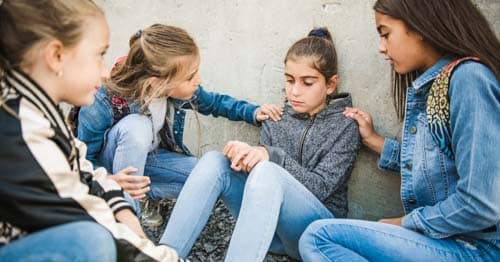Find In-Person and Online Volunteer Opportunities for Teens: Ideas for Virtual Learners
by Valerie Kirk
byBob Engler
5 min to readMention “conflict” in the context of school kids and “bully” often comes to mind. Tormenters are the most visible and talked-about sources of student conflict, but tension can also come in other forms.
Managed properly, conflict can be constructive. Disagreements help students find ways to work together, gain new perspectives, re-think old ideas and conceptions, and strengthen interpersonal relationships.
But to keep arguments from boiling over into destructive events, conflict resolution skills for kids should be kept top of mind as an educational goal.
Those skills will serve students well throughout their lives. The first step in helping students master these skills is understanding their emotions and help them see how feelings can affect the outcome of a quarrel. Students who learn to control their emotions can resolve squabbles before they deteriorate.
Bullies and disruptive kids are unfortunate features of many classrooms and schoolyards. Homeschool kids are largely free from them. But bullies can still stalk playgrounds, social events and online platforms. Cyberbullies use the Internet to incite fear through threats and intimidation by posting degrading photos or circulating rumors and, while it’s not always easy to see the warning signs of bullying, you can reassure your student that skills for resolving conflicts are within their reach.
Conflict is an unavoidable part of life, and it can begin early. A toddler who takes away a toy from another youngster is an example of an interpersonal conflict. In older children, it often presents in disagreements, arguments, or other forms of confrontation.
Since no one can expect everything to go their way all the time, it is important to instill conflict resolution strategies for students early.

The earlier that children can learn how to manage disputes, the sooner they begin cultivating their emotional intelligence, which factors into conflict prevention and tolerance. This model can help students resolve conflicts on their own:
Effective conflict resolution also requires children to remain positive, patient, and sincere. Some tips on what NOT to do include:
Family and peer activities can help students learn how to handle conflict in a controlled way. Some activities that can help children learn how empathy, communication, and self-esteem work in conflict prevention and emotional resilience include:
For more tips on preventing bullies from home, have your student take our kindness pledge.

As kids move up the academic ladder, they can start putting pressure on themselves to achieve. That pressure can cause stress, and stress leads to an inner conflict as potentially harmful as a run-in with a bully.
Stress can present as mood swings, acting out, physical ailments, or a sudden change in school performance, either external or a self-imposed pressure to achieve academic perfection. Parents can help their students resolve that internal conflict by encouraging them to:
Also, remind your student that conflict can be constructive if they remember it can help them:
Developing these dispute-resolution skills helps children become more positive, productive, and kind, and less anxious and stressed. Treating others—and themselves—with respect and compassion is something that everyone should aspire to do. And it can help children avoid unnecessary conflict.
Sometimes a bullying scenario needs to be cut off to be resolved. And a change in the school environment, like transferring to an online school, might be the best solution for your student. Embrace your power of school choice and learn about the differences in schools, especially between traditional brick-and-mortar schools and online schools, and see if it’s the right fit for your family today.
